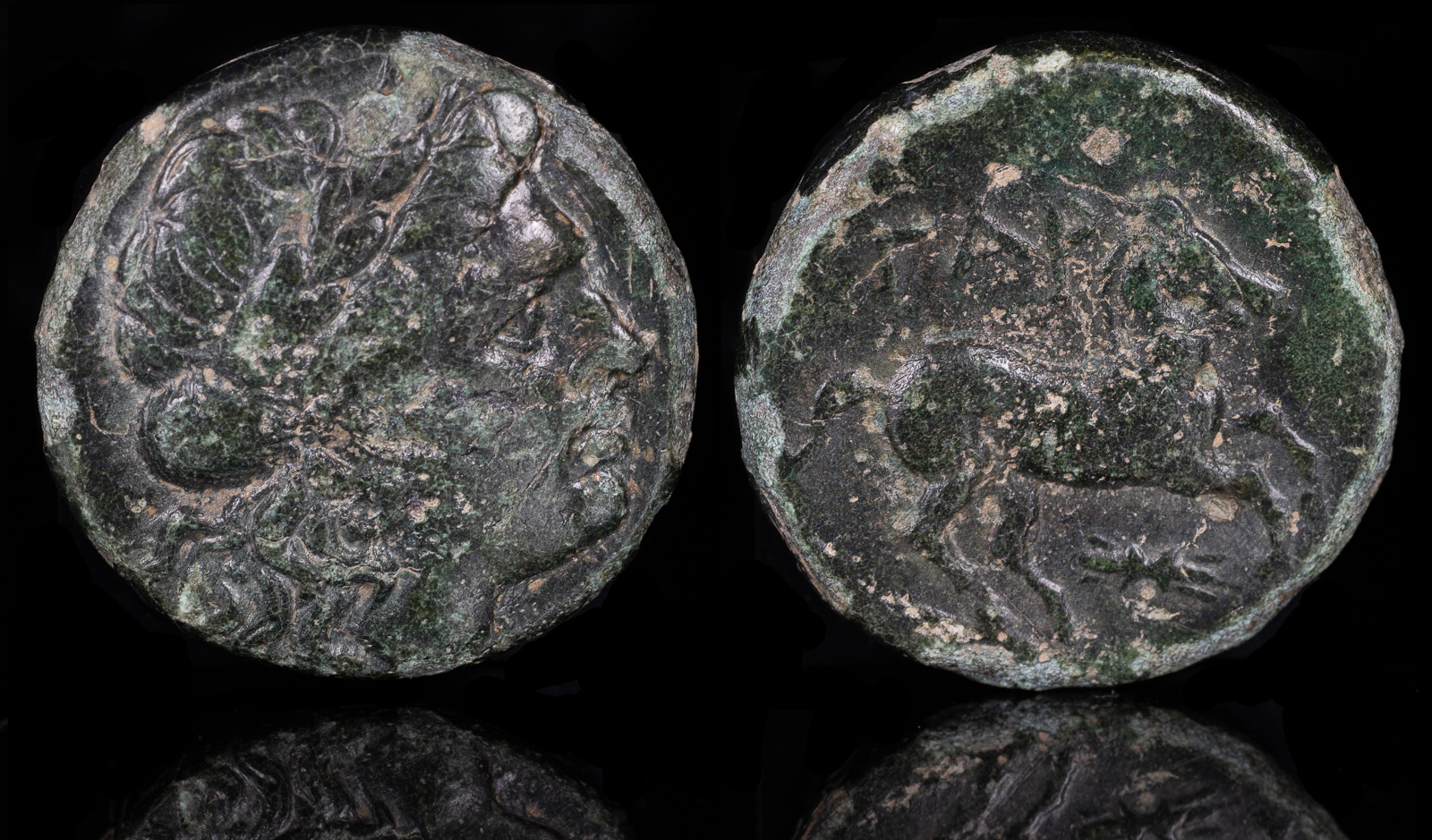
Troas, Gargara
4th century BCE
Æ 17mm, 5.37g, 12h
Laureate head of Apollo r. R/ Horse running r.; thunderbolt below.
SNG Copenhagen 316 var. (symbol); SNG von Aulock -; BMC 5
Gargara is not as old as many of the other cities of the Troad and was not mentioned by Homer. Strabo mentions that it was initially populated by settlers from Assos, but was not very big. Much later, an influx of settlers from Miletoupolis entered, likely due to an invasion by Prusias II. Strabo cites Demetrios the Skepsian in saying that the city was therefore ‘semi-barbarian’.
The city was initially located high on Mount Ida, but in roughly the 4th century BCE they moved to the base, supposedly because the higher elevation was too cold. Back then, the summit was recorded to have been snow covered.
Apollo is on all Gargara coins from the 5th to the 3rd century and therefore must have been their chief patron god. He was the god of herds, so the horse on the reverse makes sense. Similar horses are found on those of Alexandreia and Neandria, also in the Troad.

Gargara (?), Troas
3rd-2nd centuries BCE
Æ 12mm, 1,92g
Obv: Head of Hermes, right, wearing petasus; caduceus behind
Rev: Nine-rayed star
Unpublished; May be unique

Gargara, Troas
3rd to early 2nd century BCE
Ae 8mm, 0.7g
Ox: Laureate bust of Apollo right
Rx: GAP above horse galloping right
SNG Aulock 1511
Traditional founding of Gargara by Aeolian Greeks. The city was originally established on a site closer to the coast, possibly by settlers from Kyme or other Aeolian cities.